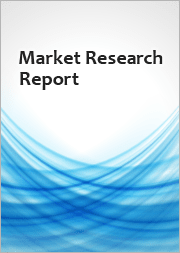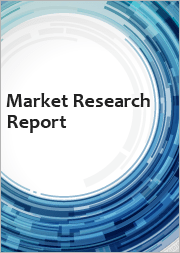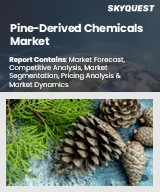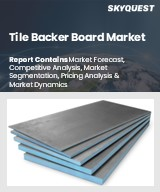
|
시장보고서
상품코드
1830577
빌드테크 텍스타일 시장 : 유형별, 제품 유형별, 원재료별, 용도별, 최종 용도별 - 세계 예측(2025-2032년)Buildtech Textiles Market by Type, Product Type, Raw Material, Application, End Use - Global Forecast 2025-2032 |
||||||
빌드테크 텍스타일 시장은 2032년까지 CAGR 5.56%로 213억 7,000만 달러로 성장할 것으로 예측됩니다.
| 주요 시장 통계 | |
|---|---|
| 기준연도 2024 | 138억 5,000만 달러 |
| 추정연도 2025 | 146억 4,000만 달러 |
| 예측연도 2032 | 213억 7,000만 달러 |
| CAGR(%) | 5.56% |
현재 빌드테크 섬유의 역동성에 대한 긴급하고 인사이트 있는 프레임워크를 제공하고, 진화하는 성능 요구 사항과 공급망의 힘이 어떻게 업계를 재편하고 있는지 설명
빌드테크 섬유 부문은 기능성 소재의 혁신과 건축 환경의 진화하는 성능 요구 사항의 교차점에 위치하고 있습니다. 건축 외피에 대한 요구, 음향 및 열 쾌적성 기준, 내구성에 대한 기대는 바닥재, 단열재, 지붕재에 사용되는 섬유의 기술적 수준을 총체적으로 끌어올리고 있습니다. 이에 따라 제조업체와 설계자들은 성능과 비용 및 규제 준수 사이의 균형을 맞추기 위해 재료 선택, 가공 방법, 수명 주기 검토를 다시 고려하고 있습니다.
최근 섬유 화학 및 섬유 공학의 발전으로 시공 효율을 희생하지 않고도 더 높은 인장 강도, 내화성 향상, 습도 관리 강화를 실현할 수 있게 되었습니다. 그 결과, 제품 개발의 궤도는 직물 구조의 강도, 부직포의 비용 효율성, 니트 구조의 적응성을 결합한 하이브리드 구조를 우선시하게 되었습니다. 이러한 수렴은 공급업체의 포트폴리오를 재구성하고, 원료 제조업체와 시스템 통합사업자 간의 긴밀한 협업을 촉진하고 있습니다.
기존 사양 관행에서 성능 중심의 조달로 전환하려면 이해관계자들은 내구성과 유지보수성 대 초기 비용, 현지 조달 선호도 대 세계 공급망 효율성, 규제 준수 대 기술 혁신 채택 등 서로 상충되는 압력을 조율해야 합니다. 그 결과, 의사결정자는 수명주기 고려, 계약자의 요구, 장기적인 성능 목표를 통합한 보다 분석적인 조달 접근 방식을 채택해야 합니다.
지속가능성 의무화, 공급망 재편, 진화하는 규제 당국의 기대 등 빌드테크 섬유를 형성하는 가장 중요한 구조적 변화를 간결하게 정리했습니다.
몇 가지 혁신적인 변화가 빌드텍텍스타일의 경쟁 환경과 사업 운영을 재정의하고 있습니다. 첫째, 지속가능성과 순환성의 원칙은 마케팅 설명에서 조달 기준으로 전환하여 제조업체가 구체화된 영향을 줄이고 재사용을 촉진하기 위해 구성 및 가공 공정을 재 설계하도록 촉구하고 있습니다. 이러한 변화는 원료 선택에 영향을 미쳐 재생 폴리에스테르와 바이오 유래 섬유에 대한 관심을 높이는 동시에 사양의 틀에서 사용한 제품에 대한 고려를 높이고 있습니다.
둘째, 기업이 탄력성과 비용의 균형을 맞추면서 공급망 재구축이 탄력을 받고 있습니다. 니어쇼어링, 공급업체 네트워크의 다양화, 전략적 재고 버퍼링은 지정학적 불안정성과 무역 정책의 예측 불가능성에 대한 일반적인 대응책이 되고 있습니다. 동시에 생산과 물류의 디지털화는 가시성을 향상시키고 보다 역동적인 조달 결정을 가능하게 합니다.
셋째, 규제와 표준의 발전으로 건축에 사용되는 섬유 제품에 대한 방화, 보온, 환경 성능에 대한 요구가 더욱 엄격해지고 있습니다. 이러한 변화로 인해 검증된 테스트 데이터, 제3자 인증, 제품 투명성 공개에 대한 요구가 가속화되고 있습니다. 마지막으로 건축가, 시공사, 자산 소유자의 요구가 집약되면서 각 제조업체들은 소재가 아닌 시스템 차원의 솔루션을 제공하게 되었고, 서비스, 보증, 통합 능력을 경쟁 차별화 요소로 삼고 있습니다.
2025년 미국 관세 개정이 빌드테크 섬유 생태계 전반의 조달 결정, 비용 구조, 공급업체 전략을 어떻게 재구성하고 있는지를 중점적으로 살펴봅니다.
2025년 미국의 새로운 관세 도입은 빌드테크 섬유 밸류체인 전반의 조달 계산과 전략적 조달 행동에 큰 변화를 가져왔습니다. 관세 조정으로 인해 특정 수입 섬유 및 완제품의 양륙 비용의 변동이 증폭되어 구매자는 단가에만 초점을 맞추지 않고 공급업체와의 관계와 총 소유 비용을 재평가해야 합니다. 그 결과, 유연한 생산 기지와 지역 밀착형 공급망을 갖춘 제조업체가 엄격한 일정과 고정 예산의 프로젝트 입찰에서 상대적 우위를 점하게 되었습니다.
또한 관세로 인한 비용 압박은 섬유 개발 업체들이 투입 비용 노출을 줄이기 위해 대체 원료와 배합을 모색하면서 제품 개선 노력을 가속화하고 있습니다. 이와 함께 마진 확보와 품질관리를 위해 수직계열화를 추진하는 기업도 있고, 서비스 수준 유지를 위해 지역 컨버터와 전략적 파트너십을 추구하는 기업도 있습니다. 정책 전환은 또한 예상치 못한 관세 및 지연을 최소화하기 위해 관세 분류의 정확성, 서류의 엄격성, 적극적인 무역 규정 준수 프로그램의 중요성을 강화했습니다.
마지막으로 관세는 다운스트림의 사양 행동에 영향을 미치고 있습니다. 건축가와 시방서 작성자는 자재 선택시 수명주기 비용 분석과 지역 조달의 영향을 보다 적극적으로 고려하게 되었고, 조달팀은 다양한 무역 체제 하에서도 입찰 경쟁을 보장하기 위해 관세 시나리오를 공급업체 평가 프레임워크에 통합하고 있습니다.
섬유의 형식, 제품 계층, 원료 화학, 응용 기능, 최종 용도에 대한 기대치를 실용화 선택으로 연결하는 세분화 중심의 종합 분석
세분화에 대한 인사이트를 통해 소재 아키텍처, 제품군, 원료 화학, 용도 배경, 최종 용도 부문이 각각 빌드테크 텍스타일의 환경에서 뚜렷한 상업적, 기술적 요구를 주도하고 있음을 알 수 있었습니다. 건축용 섬유 형태라는 렌즈를 통해 볼 때, 니트 솔루션은 종종 특수한 설치 조건에 대한 신축성과 적합성을 제공하고, 부직포 구조는 일반적으로 단열재 및 음향 층에 비용 효율적인 성능을 제공하며, 직조 섬유는 견고한 바닥재 및 멤브레인 시스템에 치수 안정성 및 장기적인 내마모성을 제공합니다. 안정성과 장기적인 내마모성을 제공합니다.
제품 유형을 탐색하면 섬유와 원사가 고유한 인장 특성, 열 특성, 습도 특성을 통해 성능을 지원하는 한편, 섬유가 최종 조립에 사용되는 통합 층으로 어떻게 기능하는지 알 수 있습니다. 섬유의 경우, 면이나 울과 같은 천연 소재는 편안한 보온성과 지속가능성에 기여하는 반면, 폴리아미드나 폴리에스테르와 같은 합성 소재는 설계된 내구성과 예측 가능한 성능 특성을 제공합니다. 폴리아미드, 폴리에스테르, 폴리프로필렌 등 원료의 선택은 비용, 재활용성, 자외선 저항성, 열 거동 등의 트레이드오프를 가져오고, 다운스트림 공정의 결정과 사양 적합성에 직접적인 영향을 미칩니다.
바닥재는 내마모성과 치수 안정성, 단열재는 열전도율과 압축성, 루핑은 내후성과 UV 내구성을 중시합니다. 상업용, 산업용, 주거용 시장에서의 최종 용도 구분은 조달 규모, 인증 요건, 수명주기 기대치에 영향을 미치며, 궁극적으로 시장 전략과 제품 로드맵을 형성합니다.
아메리카, 유럽, 중동 및 아프리카, 아시아태평양 시장의 뉘앙스가 빌드테크 섬유의 조달, 컴플라이언스, 혁신의 길에 미치는 영향을 지역별로 상세하게 설명
지역 역학은 공급망, 규제 압력, 빌드 테크 섬유의 채택 패턴에 강한 영향을 미치며, 아메리카, 유럽 중동 및 아프리카, 아시아태평양에서 뚜렷한 행동을 볼 수 있습니다. 북미와 남미에서는 주요 건설 시장과 가까워 탄력적인 현지 조달 공급망을 중시하는 경향이 강해지면서 국내산 소재 및 지역 전환 소재에 대한 수요가 증가하고 있으며, 지속가능성 보고 요건으로 인해 공급업체는 추적 가능성과 재활용 함량을 개선하도록 유도하고 있습니다. 개선하도록 촉구하고 있습니다.
유럽, 중동 및 아프리카에서는 엄격한 규제 체계와 적극적인 지속가능성 목표가 순환형 소재와 제3자 인증의 도입을 가속화하고 있으며, 제조업체들은 제품 선언과 사용 후 제품 전략의 투명성에 대한 요구가 높아지고 있습니다. 중동에서는 극한의 기후에 견딜 수 있는 고성능성 솔루션이 중요시되는 경우가 많아 UV 안정성과 열효율이 우수한 섬유의 기술 혁신이 추진되고 있습니다.
아시아태평양은 광범위한 원료 제조 및 가공 인프라를 바탕으로 광범위한 섬유 투입물과 완제품의 중요한 생산 기지로 자리매김하고 있습니다. 그러나 진화하는 노동 기준, 에너지 전환에 대한 노력, 지역별 산업 정책으로 인해 공급업체들은 설비를 현대화하고 보다 고부가가치의 차별화 제품을 추구하고 있습니다. 지역 간 무역 흐름과 규제 차이로 인해 시장 진출기업은 비용, 규정 준수, 리드 타임의 요구 사항을 조화시키는 적응 전략을 유지해야 합니다.
기업의 행동과 경쟁 구도을 전략적으로 검토하여 재료 혁신, 통합 및 파트너십이 어떻게 이 분야 전반의 경쟁 우위를 재정의하고 있는지를 밝힙니다.
빌드테크 섬유 부문의 기업 차원의 움직임은 재료 과학, 제조 유연성, 다운스트림 통합 능력에 의해 좌우됩니다. 주요 기업은 점점 더 까다로워지는 성능 및 추적성 요건에 대응하기 위해 첨단 섬유 화학, 다층 패브릭 아키텍처, 디지털 품질관리에 투자하고 있습니다. 동시에 중견 전문 기업은 기동성을 바탕으로 설계 및 시공 파트너와 협력하여 특정 프로젝트 요구에 따라 맞춤형 배합 및 신속한 프로토타이핑 서비스를 제공합니다.
수직적 통합, 원자재 공급업체와의 합작투자, 틈새 컨버터의 타겟팅된 인수와 같은 전략적 움직임은 원자재에 대한 접근성을 확보하고, 리드타임을 단축하며, 기술 서비스 제공을 확대하기 위해 사용되는 일반적인 전술입니다. 또한 시스템 보증, 검증된 테스트 데이터, 설치 지원을 제공하는 업체는 단가뿐만 아니라 총소유비용(TCO)에서도 차별화를 꾀하고 있습니다. 또한 재생 자원 사용, 투명성 높은 제품 선언 등 지속가능성 증명에 대한 투자도 기관 및 공공 부문과 계약을 맺으려는 기업에게 경쟁적으로 요구되는 요소입니다.
재료 혁신가와 건설 시스템 통합사업자의 파트너십은 설계, 사양 수립 지원, 애프터 서비스를 통합한 종합적인 솔루션을 가능하게 하며, 시장 진출의 중요한 경로로 부상하고 있습니다. 이러한 협력 체계는 보수적인 조달 환경에서 기술적으로 진보된 제품의 채택 곡선을 가속화하는 경우가 많습니다.
제조업체와 구매자가 비용 부담을 줄이고, 지속가능성 자격증을 강화하며, 시스템 수준의 제공을 통해 차별화를 꾀할 수 있도록 우선순위를 정하고 실행 가능한 실용적인 일련의 조치들
업계 리더들은 현실적이고 단계적인 접근 방식을 채택하여 당장의 기회를 포착하는 동시에 미래 시장 변화에 대비한 탄력성을 구축해야 합니다. 첫째, 관세에 따른 비용 상승에 노출될 가능성이 높은 제품에 대해는 대체 원료와 육지에서의 비용 변동을 줄이면서 성능을 유지할 수 있는 배합 전략에 중점을 두면서 개선과 인증에 대한 노력을 우선시합니다. 동시에 관세 분류, 문서화, 무역 규정 준수 프로세스를 강화하여 예기치 않은 관세 및 공급 중단의 위험을 줄입니다.
둘째, 지속가능성 증명과 순환형 설계 관행에 대한 투자를 가속화하고, 제품 선언, 제3자 인증, 사용 경로를 명확하게 문서화하여 점점 더 엄격해지는 사양 프레임워크를 충족하도록 합니다. 자재 및 규정 준수와 병행하여 지역 컨버터 및 물류 프로바이더와 전략적 파트너십을 구축하여 리드 타임을 단축하고 프로젝트 일정에 대한 대응력을 향상시킵니다.
셋째, 검증된 성능 데이터, 보증 프레임워크, 설치 지원을 결합한 시스템 수준의 솔루션을 제공함으로써 상업적 차별화를 강화합니다. 이러한 서비스 지향은 경쟁을 상품 가격에서 성과 기반 계약으로 전환할 수 있습니다. 마지막으로 규제 변화, 관세 변동, 원자재 공급 중단 등을 모델링한 시나리오 플래닝을 제도화하여 상황 변화시 조달팀과 혁신팀이 사실에 기반한 신속한 의사결정을 내릴 수 있도록 합니다.
전문가 인터뷰, 규제 분석, 세분화 매핑, 삼각측량 등 다각적인 조사 방법을 결합하여 확실한 인사이트와 검증을 위한 투명성 있는 설명
본 Executive Summary의 기초가 되는 조사는 정성적 및 정량적 방법을 통합하여 검증되고 실용적인 인사이트를 제공합니다. 1차 조사에는 제조, 유통, 건설 최종사용자의 조달 관리자, 제품 개발자, 사양 전문가를 대상으로 한 구조화된 인터뷰가 포함됩니다. 이 인터뷰는 실제 의사결정 기준, 조달 제약 조건, 실질적인 성과에 대한 기대치를 파악하기 위해 진행되었습니다.
2차 조사는 표준, 정책 문서, 업계 발표, 기술 문헌을 망라하여 규제와 재료과학의 맥락을 구축했습니다. 데이터 삼각측량 기법은 문서화된 규제 변경 및 관찰된 공급망 조정과 인터뷰 결과를 지원하기 위해 적용되었습니다. 또한 체계적인 세분화 프레임워크를 사용하여 기술 요구 사항과 제품 형태, 원료 화학 물질, 최종 용도 분류를 일치시켜 서로 다른 시장 부문이 어떻게 행동하고 상호 작용하는지를 명확히 했습니다.
마지막으로 전문가들의 동료 검토와 대체 무역 및 규제 환경에서의 전략적 영향에 대한 시나리오 스트레스 테스트를 포함한 검증 단계를 거쳤습니다. 정책의 변화나 공급망의 갑작스러운 혼란과 같은 단기적인 역학의 변화 가능성 등 이 방법론의 한계는 인식되고 있지만, 멀티소스 접근법은 대부분의 의사결정 기간 중 견고한 전략적 지침을 지원합니다.
성능 요구, 지속가능성에 대한 기대, 무역 역학이 어떻게 수렴하고 적응 가능하고 투명하며 시스템 지향적인 건설 섬유 솔루션에 유리하게 작용하는지를 결정적으로 종합
빌드테크 섬유 부문은 성능에 대한 기대치 상승, 지속가능성에 대한 요구, 진화하는 무역 정책, 지역적 공급망 재편 등 여러 가지 요인들이 교차하면서 재편되고 있습니다. 이러한 요인들이 복합적으로 작용하여 장기적인 내구성, 규제 준수, 환경 영향 감소를 입증할 수 있는 소재에 대한 선호도가 높아지고 있습니다. 적극적으로 제품을 개선하고, 강력한 공급망을 확보하며, 엔드 투 엔드 가치 제안을 명확히 하는 업계 참가자는 프로젝트 사양과 장기 계약을 수주하는 데 유리한 위치를 차지할 수 있을 것으로 보입니다.
단기적으로는 구매자가 관세 리스크와 수명주기 분석을 조달 프로세스에 통합하는 것이 조달 결정과 사양 수립에 가장 직접적인 영향을 미칠 것으로 보입니다. 중기적으로는 기술적 성능과 운영 편의성, 그리고 문서화된 지속가능성 증명을 통해 재료의 혁신과 시스템 수준의 제공이 시장의 리더를 결정하게 될 것으로 보입니다. 따라서 상장기업은 공공 부문과 비상장기업 모두 기회를 잡기 위해 기술 개발을 투명하게 문서화하고 대응 가능한 상업적 모델과 통합하는 데 초점을 맞추어야 합니다.
적응성, 추적성, 성과 기반 솔루션을 전략의 핵심으로 삼음으로써 제조업체와 규격 제정자는 규제와 무역 문제를 차별화와 지속가능한 성장의 기회로 전환할 수 있습니다.
목차
제1장 서문
제2장 조사 방법
제3장 개요
제4장 시장 개요
제5장 시장 인사이트
제6장 미국 관세의 누적 영향 2025
제7장 AI의 누적 영향 2025
제8장 빌드테크 텍스타일 시장 : 유형별
- 니트 빌드테크 텍스타일
- 부직포 빌드테크 텍스타일
- 직물 빌드테크 텍스타일
제9장 빌드테크 텍스타일 시장 : 제품 유형별
- 패브릭
- 섬유
- 천연
- 코튼
- 울
- 합성
- 폴리아미드
- 폴리에스테르
- 천연
- 실
제10장 빌드테크 텍스타일 시장 : 원재료별
- 폴리아미드
- 폴리에스테르
- 폴리프로필렌
제11장 빌드테크 텍스타일 시장 : 용도별
- 바닥재
- 절연
- 루핑
제12장 빌드테크 텍스타일 시장 : 최종 용도별
- 상업용
- 산업용
- 주택용
제13장 빌드테크 텍스타일 시장 : 지역별
- 아메리카
- 북미
- 라틴아메리카
- 유럽, 중동 및 아프리카
- 유럽
- 중동
- 아프리카
- 아시아태평양
제14장 빌드테크 텍스타일 시장 : 그룹별
- ASEAN
- GCC
- EU
- BRICS
- G7
- NATO
제15장 빌드테크 텍스타일 시장 : 국가별
- 미국
- 캐나다
- 멕시코
- 브라질
- 영국
- 독일
- 프랑스
- 러시아
- 이탈리아
- 스페인
- 중국
- 인도
- 일본
- 호주
- 한국
제16장 경쟁 구도
- 시장 점유율 분석, 2024
- FPNV 포지셔닝 매트릭스, 2024
- 경쟁 분석
- SAINT-GOBAIN S.A.
- Owens Corning Inc.
- Knauf Insulation GmbH
- Rockwool International A/S
- Johns Manville Corporation
- DuPont de Nemours, Inc.
- Sika AG
- Carlisle Companies Incorporated
- HUESKER Synthetic GmbH
- TenCate Protective Fabrics B.V.
The Buildtech Textiles Market is projected to grow by USD 21.37 billion at a CAGR of 5.56% by 2032.
| KEY MARKET STATISTICS | |
|---|---|
| Base Year [2024] | USD 13.85 billion |
| Estimated Year [2025] | USD 14.64 billion |
| Forecast Year [2032] | USD 21.37 billion |
| CAGR (%) | 5.56% |
An urgent and insightful framing of current Buildtech Textiles dynamics that explains how evolving performance requirements and supply chain forces are reshaping the industry
The Buildtech Textiles sector stands at the intersection of functional material innovation and the built environment's evolving performance requirements. Building envelope demands, acoustic and thermal comfort standards, and durability expectations have collectively raised the technical bar for textiles used in flooring, insulation, and roofing applications. In response, manufacturers and specifiers are rethinking material selection, processing methods, and lifecycle considerations to balance performance with cost and regulatory compliance.
Recent advances in fiber chemistry and textile engineering have enabled fabrics to deliver higher tensile strength, improved fire resistance, and enhanced moisture management without sacrificing installation efficiency. As a result, product development trajectories increasingly prioritize hybrid constructions that combine the strength of woven architectures, the cost-efficiency of nonwovens, and the adaptability of knitted structures. This convergence is reshaping supplier portfolios and prompting closer collaboration between raw material producers and system integrators.
Transitioning from legacy specification habits to performance-driven procurement requires stakeholders to reconcile competing pressures: durability and maintainability versus upfront cost, local sourcing preferences versus global supply chain efficiencies, and regulatory conformity versus innovation adoption. Consequently, decision-makers must adopt a more analytical procurement approach that incorporates lifecycle considerations, contractor needs, and long-term performance objectives.
A concise synthesis of the most consequential structural changes shaping Buildtech Textiles including sustainability mandates, supply chain realignment, and evolving regulatory expectations
Several transformative shifts are redefining the competitive and operational landscape for Buildtech Textiles. First, sustainability and circularity principles have moved beyond marketing narratives into procurement criteria, prompting manufacturers to redesign compositions and processing steps to reduce embodied impacts and facilitate reuse. This shift is influencing raw material selection, spurring interest in recycled polyesters and bio-derived fibers while also elevating end-of-life considerations within specification frameworks.
Second, supply chain reconfiguration is gaining momentum as firms balance resilience and cost. Nearshoring, diversified supplier networks, and strategic inventory buffers are becoming commonplace responses to geopolitical instability and trade policy unpredictability. At the same time, digitalization across production and logistics is improving visibility and enabling more dynamic sourcing decisions.
Third, regulatory and standards developments are tightening fire, thermal, and environmental performance requirements for textiles used in construction. These changes are accelerating demand for validated test data, third-party certifications, and product transparency disclosures. Lastly, converging demands from architects, contractors, and asset owners are pushing manufacturers to offer system-level solutions rather than standalone materials, thereby elevating service, warranty, and integration capabilities as competitive differentiators.
A focused examination of how the 2025 United States tariff changes are reshaping sourcing decisions, cost structures, and supplier strategies across the Buildtech Textiles ecosystem
The introduction of new United States tariffs in 2025 has materially altered procurement calculus and strategic sourcing behaviors across the Buildtech Textiles value chain. Tariff adjustments have amplified landed cost volatility for certain imported fibers and finished textile products, prompting buyers to reassess supplier relationships and total cost of ownership rather than focusing solely on unit price. As a consequence, manufacturers with flexible production footprints or localized supply chains have gained relative advantage when bidding on projects with tight timelines and fixed budgets.
Moreover, the tariff-driven cost pressure has accelerated product reformulation efforts, as textile developers explore alternative raw materials and blends to mitigate input-cost exposure. In parallel, some firms have increased vertical integration to capture margins and control quality, while others have pursued strategic partnerships with regional converters to maintain service levels. The policy shift has also reinforced the importance of customs classification accuracy, documentation rigor, and proactive trade compliance programs to minimize unexpected duties and delays.
Finally, the tariffs have influenced downstream specification behavior. Architects and specifiers are more actively considering life-cycle cost analyses and regional sourcing implications during material selection, and procurement teams are integrating tariff scenarios into supplier evaluation frameworks to ensure bids remain competitive under varying trade regimes.
A comprehensive segmentation-driven analysis that connects textile formats, product hierarchies, raw material chemistry, application functions, and end-use expectations to practical commercialization choices
Segmentation insight reveals that material architecture, product families, raw material chemistry, application contexts, and end-use sectors each drive distinct commercial and technical demands within the Buildtech Textiles landscape. When viewed through the lens of construction-grade textile formats, knitted solutions often provide elasticity and conformability for specialized installation conditions, nonwoven constructions typically deliver cost-efficient performance for insulation and acoustic layers, and woven textiles provide dimensional stability and long-term abrasion resistance for heavy-duty flooring and membrane systems.
Exploring product type clarifies how fabrics function as the integrative layer used in final assembly, while fibers and yarns underpin performance through their intrinsic tensile, thermal, and moisture properties. Within fibers, natural variants such as cotton and wool contribute favorable thermal comfort and sustainability narratives, whereas synthetic classes like polyamide and polyester offer engineered durability and predictable performance characteristics. Raw material choices-spanning polyamide, polyester, and polypropylene-introduce trade-offs in cost, recyclability, UV resistance, and thermal behavior that directly affect downstream processing decisions and specification suitability.
Applications further differentiate technical requirements; flooring demands wear resistance and dimensional stability, insulation prioritizes thermal conductivity and compressibility, and roofing emphasizes weatherproofing and UV endurance. End-use segmentation between commercial, industrial, and residential markets influences procurement scale, certification requirements, and lifecycle expectations, ultimately shaping go-to-market strategies and product roadmaps.
A regional perspective detailing how Americas, Europe Middle East & Africa, and Asia-Pacific market nuances influence sourcing, compliance, and innovation pathways for Buildtech Textiles
Regional dynamics exert strong influence on supply chains, regulatory pressures, and adoption patterns across Buildtech Textiles, with distinct behaviors emerging in the Americas, Europe Middle East & Africa, and Asia-Pacific zones. In the Americas, proximity to major construction markets and a growing emphasis on resilient, locally sourced supply chains have increased demand for domestically produced or regionally converted materials, while sustainability reporting requirements are encouraging suppliers to improve traceability and recycled content.
Across Europe, Middle East & Africa, stringent regulatory regimes and aggressive sustainability targets are accelerating uptake of circular materials and third-party certifications, and manufacturers face heightened demand for transparency in product declarations and end-of-life strategies. The Middle East component of this region often emphasizes high-performance solutions that withstand extreme climates, thereby driving innovation in UV-stable and thermally efficient textiles.
In Asia-Pacific, the region remains a critical production hub for a broad range of textile inputs and finished assemblies, underpinned by extensive raw material manufacturing and processing infrastructure. However, evolving labor standards, energy transition initiatives, and localized industrial policies are prompting suppliers to modernize facilities and pursue higher-value differentiated products. Cross-region trade flows and regulatory divergence require market participants to maintain adaptive strategies that reconcile cost, compliance, and lead-time imperatives.
A strategic review of company behaviors and competitive moves revealing how material innovation, integration, and partnerships are redefining competitive advantage across the sector
Company-level dynamics in the Buildtech Textiles sector are driven by capabilities in material science, manufacturing flexibility, and downstream integration. Leading players are investing in advanced fiber chemistries, multilayer fabric architectures, and digital quality controls to meet increasingly stringent performance and traceability requirements. At the same time, mid-sized specialists are leveraging nimbleness to collaborate with design and construction partners, delivering customized formulations and rapid prototyping services that align with specific project needs.
Strategic moves such as vertical integration, joint ventures with raw material suppliers, and targeted acquisitions of niche converters are common tactics used to secure raw material access, reduce lead times, and expand technical service offerings. Additionally, companies that offer system warranties, validated testing data, and installation support have been able to differentiate on total cost of ownership rather than on unit price alone. Investment in sustainability credentials, including use of recycled content and transparent product declarations, has also become a competitive necessity for firms seeking institutional and public-sector contracts.
Partnerships between material innovators and construction systems integrators are emerging as an important route to market, enabling holistic solutions that bundle design, specification assistance, and after-sales support. These collaborative arrangements often accelerate adoption curves for technically advanced products within conservative procurement environments.
A pragmatic set of prioritized and implementable actions for manufacturers and buyers to reduce cost exposure, strengthen sustainability credentials, and differentiate through system-level offerings
Industry leaders should adopt a pragmatic, phased approach to capture near-term opportunities while building resilience for future market shifts. First, prioritize reformulation and qualification efforts for products with high exposure to tariff-driven cost increases, focusing on alternative raw materials and blend strategies that preserve performance while lowering landed cost volatility. Concurrently, strengthen customs classification, documentation, and trade compliance processes to reduce the risk of unexpected duties and supply interruptions.
Second, accelerate investments in sustainability credentials and circular design practices, ensuring that product declarations, third-party certifications, and end-of-life pathways are clearly documented to satisfy increasingly demanding specification frameworks. Parallel to material and compliance work, build strategic partnerships with regional converters and logistics providers to shorten lead times and improve responsiveness to project schedules.
Third, enhance commercial differentiation by offering system-level solutions that combine validated performance data, warranty frameworks, and installation support. This service orientation can shift competition away from commodity pricing toward outcomes-based contracting. Finally, institutionalize scenario planning that models regulatory shifts, tariff variations, and raw material supply disruptions so procurement and innovation teams can make faster, fact-based decisions when conditions change.
A transparent explanation of the multi-method research approach combining expert interviews, regulatory analysis, segmentation mapping, and triangulation to ensure robust insights and validation
The research underpinning this executive summary integrates qualitative and quantitative methods to deliver validated, actionable insights. Primary research included structured interviews with procurement managers, product developers, and specification professionals across manufacturing, distribution, and construction end users. These interviews were designed to capture real-world decision criteria, sourcing constraints, and practical performance expectations.
Secondary research encompassed standards, policy documents, trade announcements, and technical literature to frame regulatory and material science contexts. Data triangulation techniques were applied to corroborate interview findings with documented regulatory changes and observed supply chain adjustments. In addition, a systematic segmentation framework was used to map technical requirements against product formats, raw material chemistries, application needs, and end-use categories to ensure clarity in how different market segments behave and interact.
Finally, validation steps included expert peer review and scenario stress-testing of strategic implications under alternative trade and regulatory environments. Limitations of the methodology are acknowledged, including potential shifts in policy or abrupt supply chain disruptions that could alter short-term dynamics, but the multi-source approach supports robust strategic guidance for most decision-making horizons.
A decisive synthesis of how performance demands, sustainability expectations, and trade dynamics converge to favor adaptable, transparent, and system-oriented textile solutions for construction
The Buildtech Textiles sector is being reshaped by intersecting forces: heightened performance expectations, sustainability imperatives, evolving trade policies, and regional supply chain realignment. Together, these drivers are increasing the premium placed on materials that can demonstrate long-term durability, regulatory compliance, and lower environmental impact. Industry participants that proactively reformulate products, secure resilient supply chains, and articulate end-to-end value propositions will be better positioned to win project specifications and long-term contracts.
In the near term, the most immediate impacts will be felt in sourcing decisions and specification practices as buyers incorporate tariff risk and lifecycle analyses into procurement processes. Over the medium term, material innovation and system-level offerings will determine market leaders by aligning technical performance with operational convenience and documented sustainability credentials. Therefore, companies should focus on integrating technical development with transparent documentation and responsive commercial models to capture both public and private sector opportunities.
By centering strategy on adaptability, traceability, and outcome-based solutions, manufacturers and specifiers can transform regulatory and trade challenges into opportunities for differentiation and sustained growth.
Table of Contents
1. Preface
- 1.1. Objectives of the Study
- 1.2. Market Segmentation & Coverage
- 1.3. Years Considered for the Study
- 1.4. Currency & Pricing
- 1.5. Language
- 1.6. Stakeholders
2. Research Methodology
3. Executive Summary
4. Market Overview
5. Market Insights
- 5.1. Rising demand for bio-based textile composites in sustainable building facades and insulation
- 5.2. Integration of smart sensor textiles for real-time structural health monitoring in high-rise buildings
- 5.3. Adoption of antimicrobial and self-cleaning textile membranes in HVAC duct and ceiling applications
- 5.4. Growth of photovoltaic-integrated textile shading systems to enhance energy efficiency in commercial offices
- 5.5. Regulatory shifts driving flame retardant performance standards for upholstery textiles in public infrastructure
- 5.6. Circular economy initiatives promoting recycling of post-consumer textile waste into concrete reinforcement fabrics
- 5.7. Development of thermochromic textile coatings for adaptive solar shading on building exteriors
- 5.8. Customizable acoustic textile panels combining noise mitigation and aesthetic design for open plan offices
- 5.9. Expansion of bio-based geotextiles for soil stabilization and erosion control in green urban infrastructure
6. Cumulative Impact of United States Tariffs 2025
7. Cumulative Impact of Artificial Intelligence 2025
8. Buildtech Textiles Market, by Type
- 8.1. Knitted Buildtech Textiles
- 8.2. Nonwoven Buildtech Textiles
- 8.3. Woven Buildtech Textiles
9. Buildtech Textiles Market, by Product Type
- 9.1. Fabrics
- 9.2. Fibers
- 9.2.1. Natural
- 9.2.1.1. Cotton
- 9.2.1.2. Wool
- 9.2.2. Synthetic
- 9.2.2.1. Polyamide
- 9.2.2.2. Polyester
- 9.2.1. Natural
- 9.3. Yarns
10. Buildtech Textiles Market, by Raw Material
- 10.1. Polyamide
- 10.2. Polyester
- 10.3. Polypropylene
11. Buildtech Textiles Market, by Application
- 11.1. Flooring
- 11.2. Insulation
- 11.3. Roofing
12. Buildtech Textiles Market, by End Use
- 12.1. Commercial
- 12.2. Industrial
- 12.3. Residential
13. Buildtech Textiles Market, by Region
- 13.1. Americas
- 13.1.1. North America
- 13.1.2. Latin America
- 13.2. Europe, Middle East & Africa
- 13.2.1. Europe
- 13.2.2. Middle East
- 13.2.3. Africa
- 13.3. Asia-Pacific
14. Buildtech Textiles Market, by Group
- 14.1. ASEAN
- 14.2. GCC
- 14.3. European Union
- 14.4. BRICS
- 14.5. G7
- 14.6. NATO
15. Buildtech Textiles Market, by Country
- 15.1. United States
- 15.2. Canada
- 15.3. Mexico
- 15.4. Brazil
- 15.5. United Kingdom
- 15.6. Germany
- 15.7. France
- 15.8. Russia
- 15.9. Italy
- 15.10. Spain
- 15.11. China
- 15.12. India
- 15.13. Japan
- 15.14. Australia
- 15.15. South Korea
16. Competitive Landscape
- 16.1. Market Share Analysis, 2024
- 16.2. FPNV Positioning Matrix, 2024
- 16.3. Competitive Analysis
- 16.3.1. SAINT-GOBAIN S.A.
- 16.3.2. Owens Corning Inc.
- 16.3.3. Knauf Insulation GmbH
- 16.3.4. Rockwool International A/S
- 16.3.5. Johns Manville Corporation
- 16.3.6. DuPont de Nemours, Inc.
- 16.3.7. Sika AG
- 16.3.8. Carlisle Companies Incorporated
- 16.3.9. HUESKER Synthetic GmbH
- 16.3.10. TenCate Protective Fabrics B.V.



















